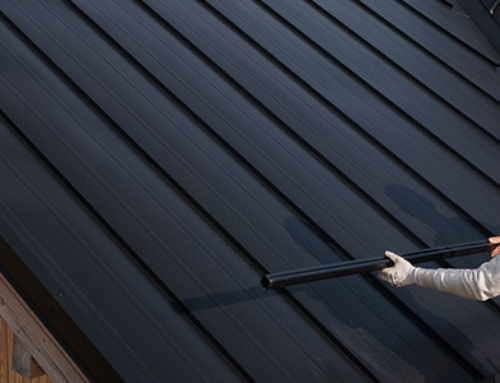Cost-Smart Homebuilding: Design Strategies That Cut Waste
In an era defined by fluctuating material prices, labor shortages, and mounting regulatory pressure, construction business owners face a complex cost landscape. Yet amid uncertainty, a proactive design strategy can yield significant savings across every project phase. One of the most effective levers for controlling construction costs starts at the blueprint stage: standardization.
Implementing lean building principles allows construction firms to align high-value design elements with predictable, cost-efficient workflows. This method promotes replicability without sacrificing visual appeal or buyer satisfaction. Instead of customizing every element for each project, high-performing builders are moving toward a curated portfolio of design features that serve multiple builds.
A well-thought-out replication model not only saves on design time, but also allows builders to realize purchasing economies at scale. For instance, standardizing window and door dimensions reduces waste and improves procurement efficiencies. By aligning material dimensions with manufacturer defaults—such as optimizing soffit sizes to match 16-inch increments—builders can significantly reduce offcuts and minimize jobsite waste.
Standardization also extends to finish packages. While customization remains an important selling point, excessive variability can erode profit margins. Builders leveraging tiered finish selections create predictability in material orders, streamline installation workflows, and offer buyers clear upgrade paths—all without overcomplicating the build.
Ultimately, the goal is to simplify where it counts and refine where it sells. Designing around existing material standards and customer-favored finishes not only protects margins but also provides clarity across design, procurement, and construction teams.
🔵 Design for Savings: Plan Your 2025 BPA Around Smart Standardization
Replicable, lean design is the cornerstone of cost control. A BPA helps builders translate these ideas into consistent, profitable systems.
Efficient Systems, Smarter Structures: Where Design and Operations Intersect
A robust cost management strategy extends beyond materials. Integrating systemic efficiencies into both the physical home and the internal processes that support its delivery is essential. As construction becomes more multidisciplinary, successful builders are viewing cost through the dual lenses of structure and systems.
Centralization of Mechanical Systems
Designing homes with centralized mechanical cores—where plumbing, HVAC, and electrical components are co-located—improves installation speed and serviceability. This method minimizes material waste, reduces labor hours, and simplifies inspections. It also prepares homes for future upgrades or tech integrations, such as whole-home automation or renewable energy systems.
Solar mandates, such as those enacted in California and considered in states like Massachusetts and New York, are pushing builders to proactively design for energy generation. While initial costs may rise, integrated solar-ready design can avoid retrofitting expenses and position builders favorably with eco-conscious buyers.
Synergizing Back-Office Operations
Internally, many construction firms suffer avoidable losses due to misaligned design, engineering, and landscape plans. A standardized procedural playbook—one that spans architectural intent through execution—can eliminate these disconnects. Firms that invest in process alignment across preconstruction, procurement, and warranty operations often see reductions in RFIs, faster build cycles, and fewer rework orders.
Actionable Strategies to Control Construction Costs Through Design
- Centralize mechanical systems to improve installation speed and long-term service access
- Standardize structural components to reduce customization and material variation
- Align floor plans with solar and HVAC optimization for future compliance
- Establish cross-functional workflows between architecture, engineering, and trades
- Use tiered interior finishes to balance design flexibility with predictable cost controls
As systems thinking becomes standard practice in progressive construction firms, it is clear that the relationship between design and margin control is not incidental—it is foundational.
🔵 Build Smarter from the Ground Up with a BPA
Design systems and operational workflows must sync. A BPA will help you integrate field strategy with business execution.
Building for Value: Simplicity, Sustainability, and Smarter Footprints
Design complexity often carries a hidden price tag. Ornate structures, unnecessary framing deviations, and over-customized floor plans not only lengthen build time but also inflate labor costs. For construction businesses operating in today’s volatile environment, simplicity in form is a strategic advantage.
Vertical Over Horizontal
A prime example of cost-effective spatial design is the shift toward vertical building. Two-story homes offer more livable square footage on a smaller foundation, reducing land usage and excavation expenses. With land prices escalating in many urban and suburban markets, efficient use of the lot footprint is now a strategic imperative.
Simplifying massing—such as avoiding unnecessary rooflines, irregular angles, or non-load-bearing decorative elements—can also cut down on framing complexity and associated labor. The most economical structural form remains the box; thoughtful architectural detailing can then be applied selectively to maintain curb appeal without compromising budget discipline.
Sustainable Practices with Tangible ROI
Sustainability is no longer optional. Builders incorporating passive solar principles, energy recovery ventilation (ERV) systems, and low-VOC materials not only offer healthier homes, but also enhance long-term value propositions for buyers. Reducing material waste through modular planning and design-for-deconstruction techniques furthers this ethos while lowering cost inputs.
Buyers are increasingly receptive to homes marketed as energy-efficient and wellness-oriented, especially when these features translate into long-term utility savings. Builders who articulate these benefits clearly—through sales materials or model home tours—are more likely to see returns on sustainable investments.
Maximizing Natural Assets
Strategic window placement to enhance natural daylighting and passive heating can also reduce energy demands and improve buyer satisfaction. Additionally, designs that consider roof orientation, shading, and ventilation promote thermal comfort without costly mechanical interventions.
By designing homes with sustainability as a cost-control mechanism—not just a marketing point—builders position themselves at the intersection of consumer demand and operational efficiency.
Design-Led Cost Strategy for 2025 and Beyond
As the construction industry continues to navigate inflation, labor shortages, and shifting buyer expectations, design-driven cost control is no longer optional—it’s essential. Builders that embrace standardization, system integration, and operational alignment will be the ones who protect profitability and scale intelligently in the years ahead.
But this isn’t a journey any builder has to take alone. The Business Plan of Actions (BPA) from Small Business Growth Partners is a customized, construction-specific roadmap that helps businesses turn these strategies into systems. Whether you’re a homebuilder refining your operations or a contractor supporting a network of trades, a BPA brings clarity to your business model.
Importantly, many homebuilders rely on long-term relationships with subcontractors and trade partners—and those partnerships are only as strong as each party’s business foundation. Builders looking to future-proof their operations are encouraging their key subcontractors to also complete a BPA, ensuring everyone on the job is aligned, profitable, and set up to succeed.
A BPA helps when:
- Your costs are rising faster than your profits
- You’re struggling to streamline or replicate design choices
- Your subcontractors’ challenges are affecting your build schedule
- You want to plan with confidence for growth or succession
⏳ The deadline to guarantee Q2 delivery of your 2025 BPA is May 12th
HBAM members have exclusive access to this high-value service. It only takes a few minutes to register, and a Growth Partners coach will follow up to determine fit—no pressure.





